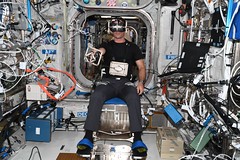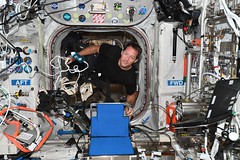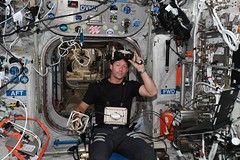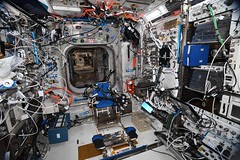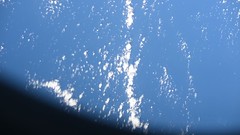Grasping for...
vendredi 14 mai 2021 à 16:34Thomas Pesquet posted a photo:
This is neither a space throne, nor a medieval torture device, but the ESA/CNES Grasp experiment to understand how humans adapt their hand-eye coordination in space. Scientists think we use gravity to judge how much to extend our arm to grab an object (for example), and us being in space is a great way to find out! We use a VR headset to simulate tasks and the equipment monitors movement and timing for researchers on Earth to look at and take conclusions.
Non ce n’est pas un trône ni une chaise de torture (quoique)… c’est pour la science ! J’ai passé un bon moment assis dans cette chaise pour l’expérience ESA/CNES GRASP, qui étudie la façon dont la coordination main-œil s'adapte à l'impesanteur. Les scientifiques pensent que notre corps utilise la pesanteur pour savoir comment se déplacer, et l'espace est un excellent lieu pour vérifier. En passant, on admire le laboratoire Columbus et les patches des missions précédentes (ainsi qu’un authentique invader qui s’est glissé là-haut, les fans de street art apprécieront !!)
Credits: ESA/NASA–T. Pesquet
461H1155
